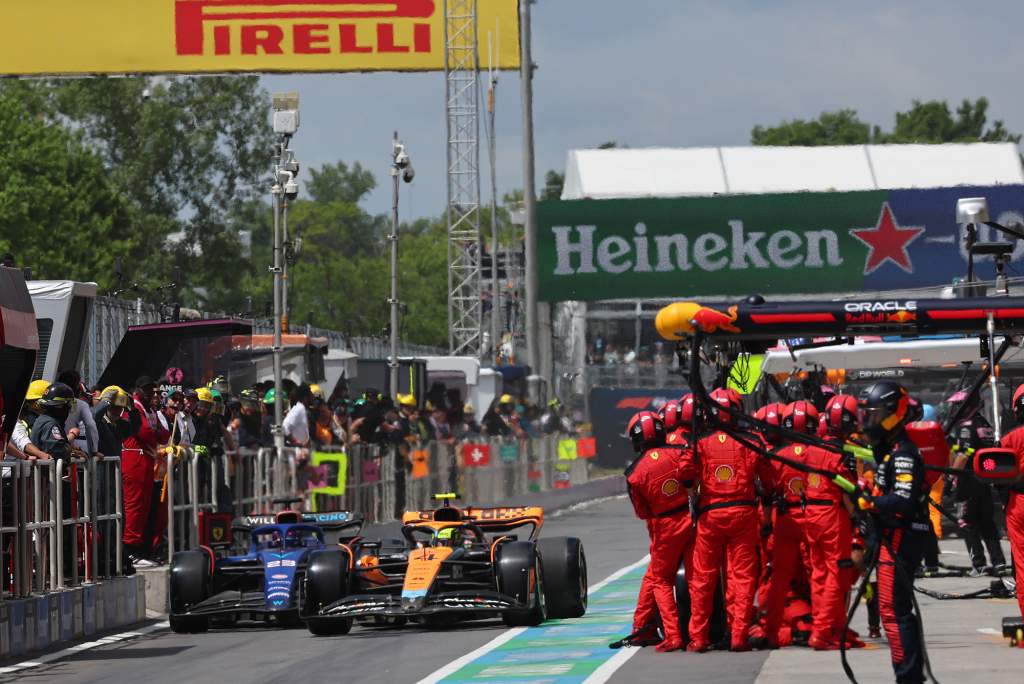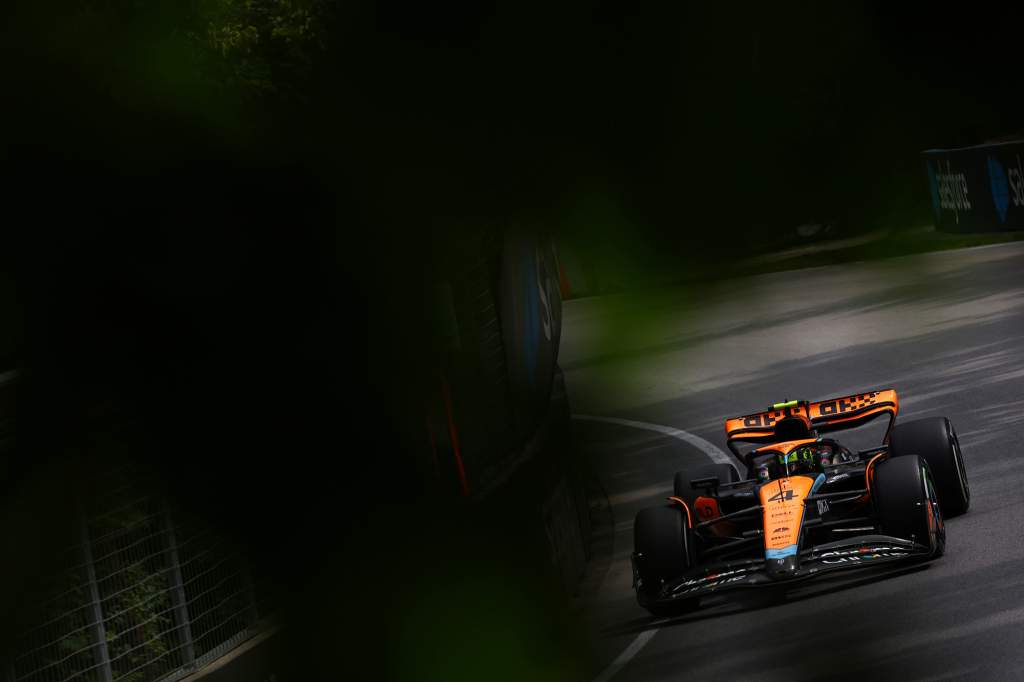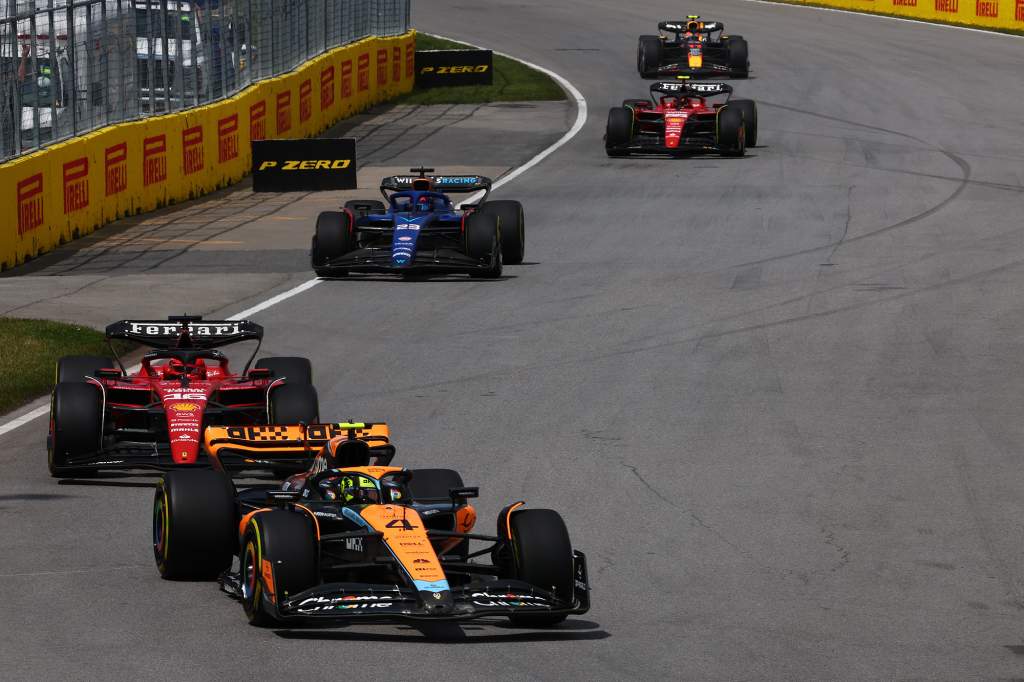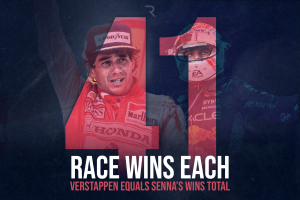Lando Norris and his McLaren Formula 1 team were surprised by his penalty for “unsportsmanlike” conduct in the Canadian Grand Prix and felt it was a departure from how such incidents are usually judged.
Norris dropped from ninth to 13th in Montreal because of a five-second penalty he received for slowing under the safety car early in the race to avoid a delay for a double stack pitstop behind team-mate Oscar Piastri.
This is a well-established practice in F1 and Norris did not even know what he had been penalised for until after the race. When he found out he was unimpressed.
“I only got told to box like three seconds before the pitlane, at that time I was flat-out, so it doesn’t make any sense to me,” he said.
“Plenty of times you go slow under a virtual safety car. If I get a penalty there I should get a penalty for the last three years as well. So should everyone else.
“I don’t know, I didn’t do anything wrong.”

Evidently the stewards disagreed and the key difference appears to be the subjective view of Norris becoming an impediment to the cars behind.
By creating a gap to Piastri, Norris delayed the drivers behind: Charles Leclerc and Alex Albon. That unfairly influenced their races and was beyond merely driving too slowly.
That is the unsporting element, which explains why the FIA International Sporting Code was invoked rather than an F1 regulation breach. And given there is precedent for drivers being punished for driving too slowly under the safety car, it is actually a fairly logical penalty and quite a sensible way of applying it.
But while the context makes the description of “unsporting” behaviour justified in hindsight, it was a departure from the norm – which is why it caught so many people by surprise and seemed slightly over the top.
Cases of drivers driving too slowly behind the safety car are usually handled through the sporting regulations relating to driving unnecessarily slowly, erratically or in a manner which could be deemed potentially dangerous to other drivers or any other person at any time whilst the safety car is deployed.
But deciding that what Norris did constituted a breach of the ISC made for an unusual decision with surprisingly strong language – unsportsmanlike behaviour – being branded across the race coverage.

This is potentially as a consequence of the rotating cast of stewards. It’s not just that different sets of stewards might judge what Norris did differently but there may also be differences in the stewards’ command of the different regulations.
One group may think a different part of the rulebook is the most appropriate to use as the reference, hence invoking the ISC on this occasion.
If such incidents were to be judged via an ISC rule governing sporting behaviour in the future, there would certainly be logic to it. And McLaren team boss Andrea Stella did wonder if the stewards were trying to set a new precedent.
“We spoke to the stewards right after the race because we thought these kinds of speeds under a safety car or even a virtual safety car shouldn’t be the reason for an infringement,” said Stella.
“There’s a possibility the stewards want to set new references. We carry on discussing with them.
“Ultimately we trust their judgement, but we are reviewing once again the behaviour of Lando because we come out of this race very surprised that this has caused a penalty.”
As far as Stella was aware, a new precedent for such an offence had not been actively discussed beforehand – and it appears the FIA just views the Montreal decision as a consistent application of how going too slowly behind the safety car is policed rather than the start of moves to restrict this tactic.

But the fact is a different rule was used to enforce it, and when that happens clarity is essential.
It is at least slightly odd that the stewards went in this direction when the sporting regulation has been so commonly applied in the past, even if the reasons seem sound. The reaction made it clear that many were surprised to see the phrase “unsportsmanlike behaviour” suddenly in play.
Stella suggested that setting a new precedent is within the FIA and the stewards’ remit but if so it should be established properly through the sporting advisory committee, the group that discusses the function and application of the sporting regulations.
“We understand the position of the stewards, we understand that they may want to set a precedent so there’s a kind of new way of interpreting the way you have to drive under safety car,” said Stella.
“If that’s the approach, fine, but it’s a bit of a shame we are involved in this – setting new precedents.”
McLaren and Norris inevitably feel hard done by but the bottom line is there is good rationale to this matter being handled in this way. Explaining it just could have been managed better.
Because when something so rarely, if ever, used to punish a driver comes to the fore, swift and clear rationale is essential.
That way even if those involved, and their fans, disagree with a decision, it’s at least clear what the logic was to it.




